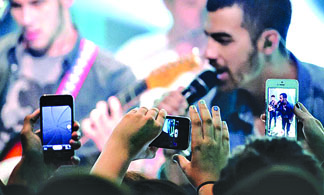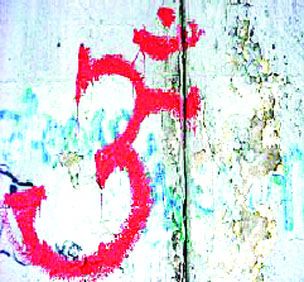Anoop Verma  When you are freshly out of college, the temptation is to pick up any job that becomes available. This system can work fine during the initial phase of your career, but if you make it a habit of rushing headlong into any minor job whenever you find yourself find it unemployed, then you could be thwarting your professional growth.
When you are freshly out of college, the temptation is to pick up any job that becomes available. This system can work fine during the initial phase of your career, but if you make it a habit of rushing headlong into any minor job whenever you find yourself find it unemployed, then you could be thwarting your professional growth.
There is no doubt that in today’s economy it is tough to find that perfect position, especially since there are so many professionals out of work that have a substantial amount of experience. You are not only going head to head with other interns and recent graduates, but you are also going up against those in the job market who have experience and are willing to take a cut in pay just to get back into the job market. Landing a marketing position can be tough, but not impossible.
You have to keep in mind that even the best-intentioned internships can limit you. Turning down work is a privilege, but it just might be one that should be evoked. Also, it is for you to decide what kind of entry level employee you want to be. After all, just because you are holding an entry level position, it does not mean that you are not capable of creating value for the company where you work.
A mentor might be necessary to push you in the right direction so that you can break free from the entry level position. A professional mentor can bring to you a sounding board, valuable contact, and someone who can share their ups and downs within the industry. You have to use your networking skills to get in touch with the right kind of mentor. It is possible that your mentoring relationship should commence with an email, tweet or even a LinkedIn connection.
Don’t wait for new assignments to drop onto your desk. You have to be proactive in seeking out areas where you can be useful for the organisation. By doing plenty of research and observation you can figure out where there are opportunities to dive in and help your company. You should always keep an eye on the returns that you are providing to the company. If you are not making your company enough money to cover the cost of your employment, then it is likely that you might not be around for long.
Digital Camera Etiquette
Anoop Verma
 Technology and etiquette have been colliding for quite some time. We carry digital cameras everywhere, and many of us keep finding new ways of annoying others with them. We don’t think twice before posting unpleasant photos of our acquaintances; at times we will push camera phones so close to people’s faces that it impedes their ability to blink.
Technology and etiquette have been colliding for quite some time. We carry digital cameras everywhere, and many of us keep finding new ways of annoying others with them. We don’t think twice before posting unpleasant photos of our acquaintances; at times we will push camera phones so close to people’s faces that it impedes their ability to blink.
So when is it right to snap a picture and when is it not? As far as legality is concerned, you need to take permission only when you intend to use the image for marketing purposes. If you just happen to be out in public, and someone takes your picture, he is free to publish it, as long as the use is not commercial in nature. This is as it should be. Otherwise, it would be difficult to post the picture of a busy marketplace, if you have to take a release from everyone who is at the market at that moment.
However, you have to always keep in mind that certain rules of etiquette are never violated. Always keep an eye on the signage; if it says “No Photography,” then you have to keep your camera away. If it says “No Flash Photography”, then the flash ought to remain off. In fact, a flash can be quite intrusive. If you are watching a performance on the stage and you keep photographing with flash, it can be distracting for the artists and also for the audience.
While it is legal to photograph in a busy marketplace, if you want to take close up of an individual or a group of people, you should ask permission first. In case, you are a tourist taking photos of people in a busy area, be sensitive to their culture. In certain cultures and religions, photography is frowned upon. In some places, they expect you to pay them if you have taken their photograph. So it is better to politely ask, before clicking a photo.
Some people get so busy in their photography that they miss life itself. It is ok, if you put the camera aside on some occasions. The emotional experience that you can have by watching something unfold can be worth much more than a mere picture. This is something that you must keep in mind.
English and Sanskrit as viewed through Ashtanga
 I’ve always been fascinated by languages, and while listening toan excellent book-on-tape on the history of the English language, I discovered that modern English and Sanskrit both stem from a common language:Proto-Indo-European (PIE). It is believed to have been spoken in Central Asia six to nine thousand years ago.
I’ve always been fascinated by languages, and while listening toan excellent book-on-tape on the history of the English language, I discovered that modern English and Sanskrit both stem from a common language:Proto-Indo-European (PIE). It is believed to have been spoken in Central Asia six to nine thousand years ago.
PIE is the common root for Ancient Greek, Latin and Sanskrit. Later on, English aquired many words from both Latin and Greek, so there are many words in common between English and Sanskrit.
When we learn the Ashtanga Vinyasa Yoga System, we are strongly encouraged to learn the Sanskrit name of all the postures, and to learn the beginning and ending chants. That’s already a vocabulary of more than a hundred words, so by learning Ashtanga, we are also beginning to learn Sanskrit.
Some of these Sanskrit words, as used in Ashtanga, still have recognisable traces in English and other European languages. Let’s start with the numbering system as called out in a led class (Sanskrit in bold, English meaning in parenthesis):
Dve (two): The “w” intwois the “v” indve. In Dutch, a friend told me the pronunciation of two is almost the same asdve.
Trini (three): This one is obvious.
Panca (five):Pancaand the Greek pente have the same root, hence pentagon.
Sapta (seven): That’s where the “p” in the Fenchseptcomes from, and in heptagon.
Ashto (eight): The same ashto as in Ashtanga, in English “sh” became “gh”.
Nava (nine): The ending “v” sound still exists in French as an “f” inneuf (“nine” in English).
Dasa (ten): French again,dix, and in English the root ofdecade, decathlon.
Samasthitih (equal standing pose): The meaning of “sama” still exists in the English wordsame.
Padahastasana (foot hand pose): The Greekpodiand Frenchpiedfor footstill exists aspodiatrist.Hastais very similar tohandbut I don’t know if it’s related.
Trikonasana (triangle pose): Tri is three as mentioned above,kona meansangleorcorner, which is pronounced almost the same.
Prasarita Padottanasana (spread out intense foot stretch): The last part of this name is a shortened version of uttana, meaningintense stretch.
Ardha Baddha Padmottanasana (half lotus bound standing forward bend):Baddha andboundhave the same root.
Virabhadrasana (hero pose):Virabhadrawas a super being created by the God Shiva, andvirameans hero. I don’t know if there is an official connection, butviraandherosound very close.
Tiriangmukhaikapada Paschimottanasana (one leg folded back):Tiriang means and sounds liketransverse.
Janu Sirsana (head of the knee):Janu, as knee, still exists in French as genou, and in English as the root ofgenuflect, to bend the knee or touch one knee to the floor or ground, as in worship.
Marichyasana (posture of Marichy):Marichywas a sage, son of Brahma and patron saint of all Mexican Mariachibands (only kidding!).
Navasana (boat pose): Navameans boat, which still exists in the French navireand as the root of navalandnavy.
Kukkutasana (rooster posture): Couldkukkube related to the Frenchcocorico, the equivalent of cock-a-doodle-doo?
Ubhaya Padangusthasana (both big toes):Ubhayameans of both, and to me these sound very similar.I’ll leave you with one last one,Amen, sorry, I mean Om.
(Courtesy: AshtangaNews.com)














Comments